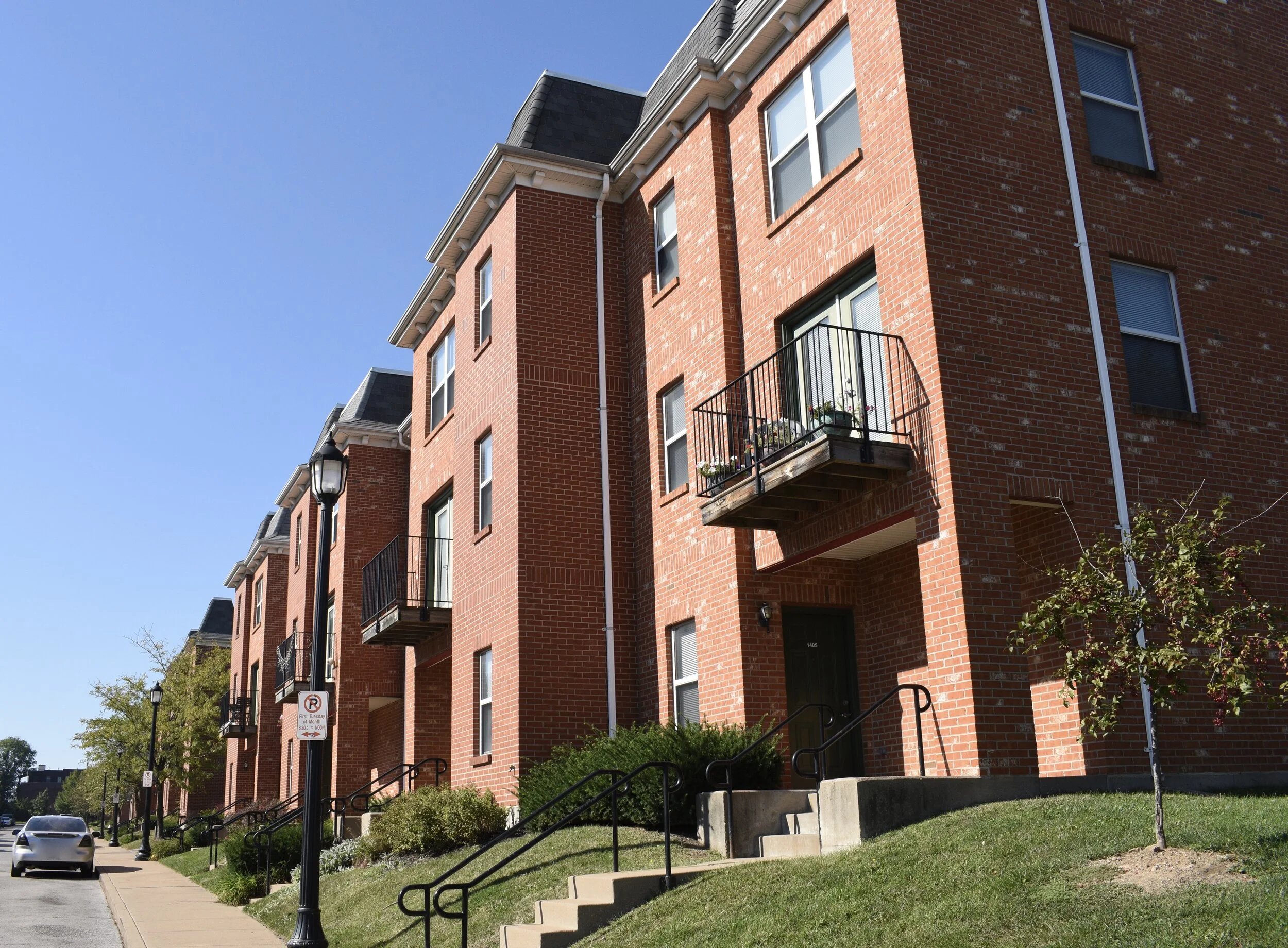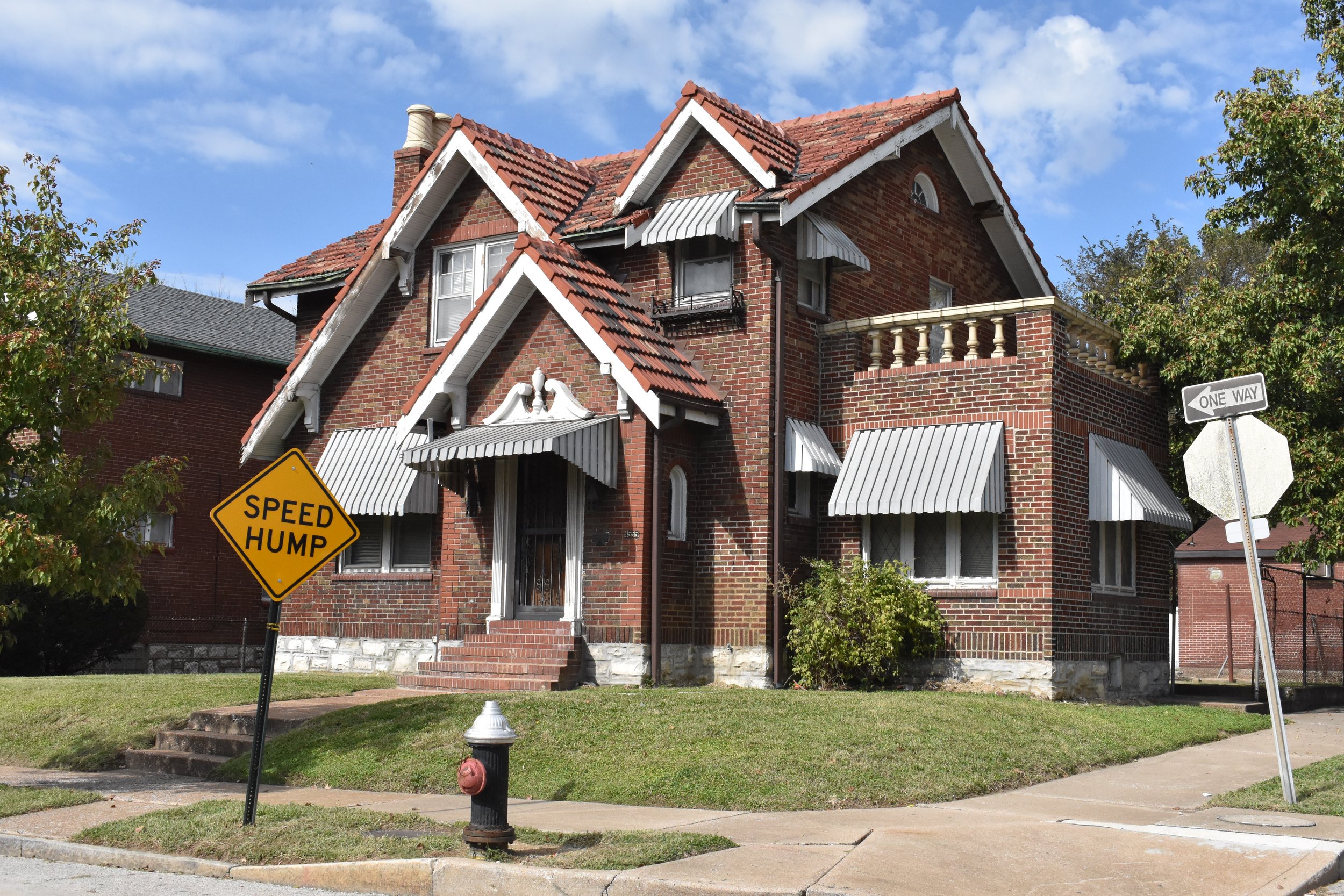It's hard to think about the massive losses we've experienced as a city over the years. It's hard to believe we let this happen. What a disposable society we are that allows this kind of architecture and history to fall by the wayside. Fairground Park is crumbling and is a tad threatening in more ways than one. This has been a volatile place when it comes to race relations in St. Louis going back to the 1940s. There was some major violence back in 1949 when the city ordered the desegregation of the swimming pools in the park. After a couple days of violence and blood shed, the city decided to go back to segregation. There's an excellent retelling of the story summarized on the Missouri History Museum website...
The North Riverfront Neighborhood
The vast majority of structures are surface lots for trucking distribution and other operations. Metal scrap yards, recycling facilities, salvage yards and contemporary metal sheds housing businesses of all kinds. I tried to point out the areas with a little more character, so you won't get a real feel for what the neighborhood looks like...which is frankly quite bland. For instance the Dial Corporation has a huge facility that makes detergents; but it's really nothing special to look at. Another thing to point out is that much of the property in North Riverfront is private and access is a challenge. The best way to take in this "neighborhood" (really an industrial area) is from atop the hills of Calvary Cemetery or from the Riverfront Trail. If you haven't checked out the 10 mile asphalt Riverfront Trail, you must. It takes you right along the Mississippi River in some spots and and also skirts some impressive industrial operations allowing you sight access to some otherwise unattainable areas. A ride north of Downtown will serve as an important reminder that St. Louis is still a working river town.
Hyde Park Neighborhood
There are lots and lots and lots of dilapidated and crumbling structures new and old in Hyde Park today. But I just can't put my finger on the way these neighborhoods make me feel. On one hand, it's clearly depressing to witness, but on the other hand, you can't help but notice the beauty and care that went into making this neighborhood an important place. The Germans that settled here did there best at making this a European-like self-contained turn of the 19th Century masterpiece of a neighborhood. Their diligence and good design can still be felt today, and it's awe inspiring. There's evidence of some positive efforts from those that have stuck it out over the years and maybe some new investment going into maintaining this place. Maybe enough to stabilize it for future generations to try to figure it out and fix it so it's a show place and contributor to St. Louis status as the premier American city of neighborhoods.
The Peabody Darst Webbe Neighborhood
The Kingsway West Neighborhood
Not unlike Kingsway East, I would describe the current state of Kingsway West in the area between "holding on" and "stable". It's seen better days, but there are still businesses serving the area, a decent park with tennis courts, ball fields, a football field and indoor/outdoor swimming pool in the Wohl Community Center and enough housing stock in decent condition to provide hope for a bright future.
The Mark Twain Neighborhood
Neighborhood Profiles in 2011
I've been putting off the neighborhoods with the largest area simply out of laziness. I'm VERY interested in Carondelet, Dutchtown, Baden and others...but they are huge and will take me all day or weekend to capture.
Central West End and Downtown will probably be last on the list simply because they will require walking to do them justice and I could take 1000s of pictures of these two premier locations in St. Louis.








